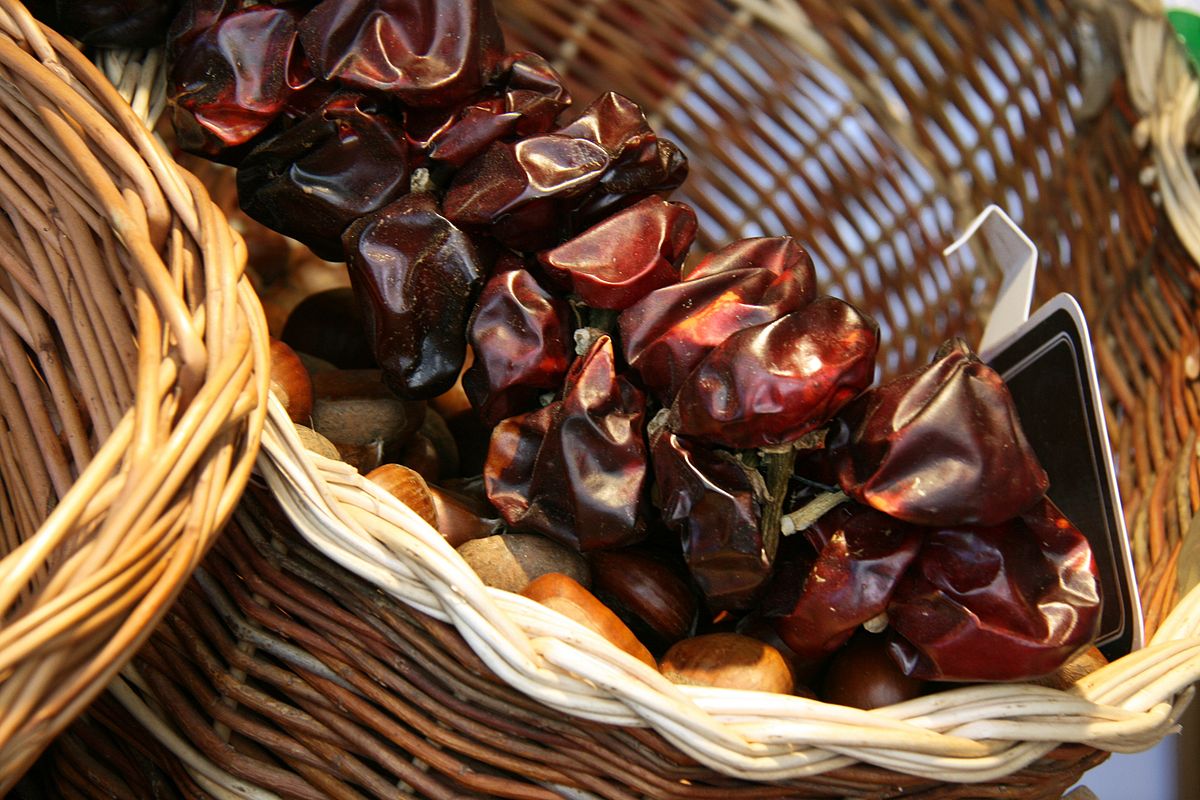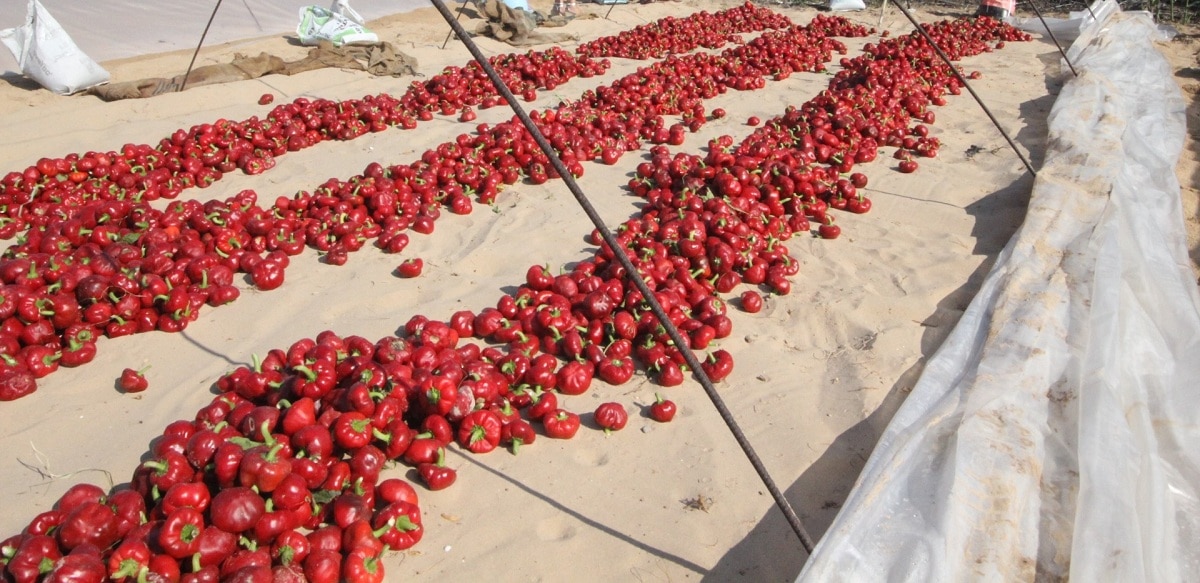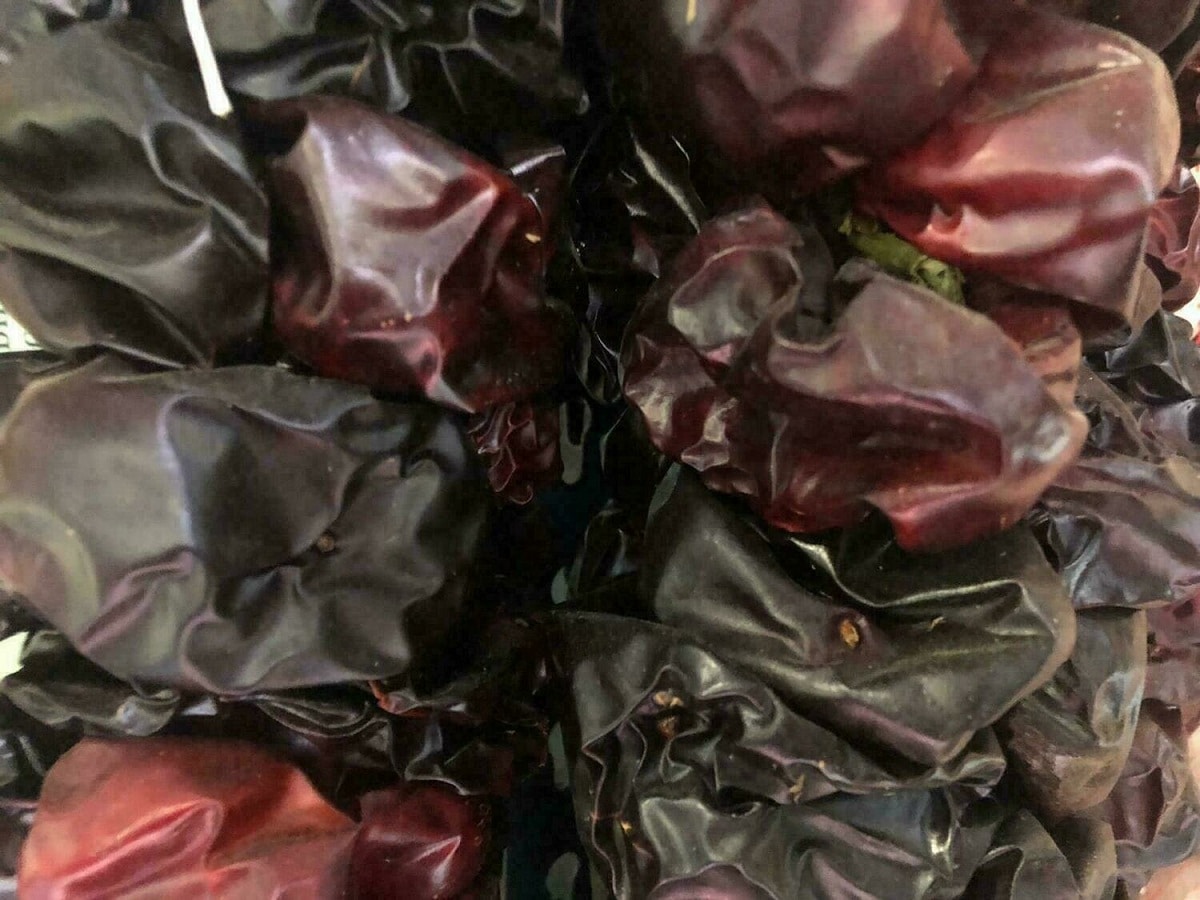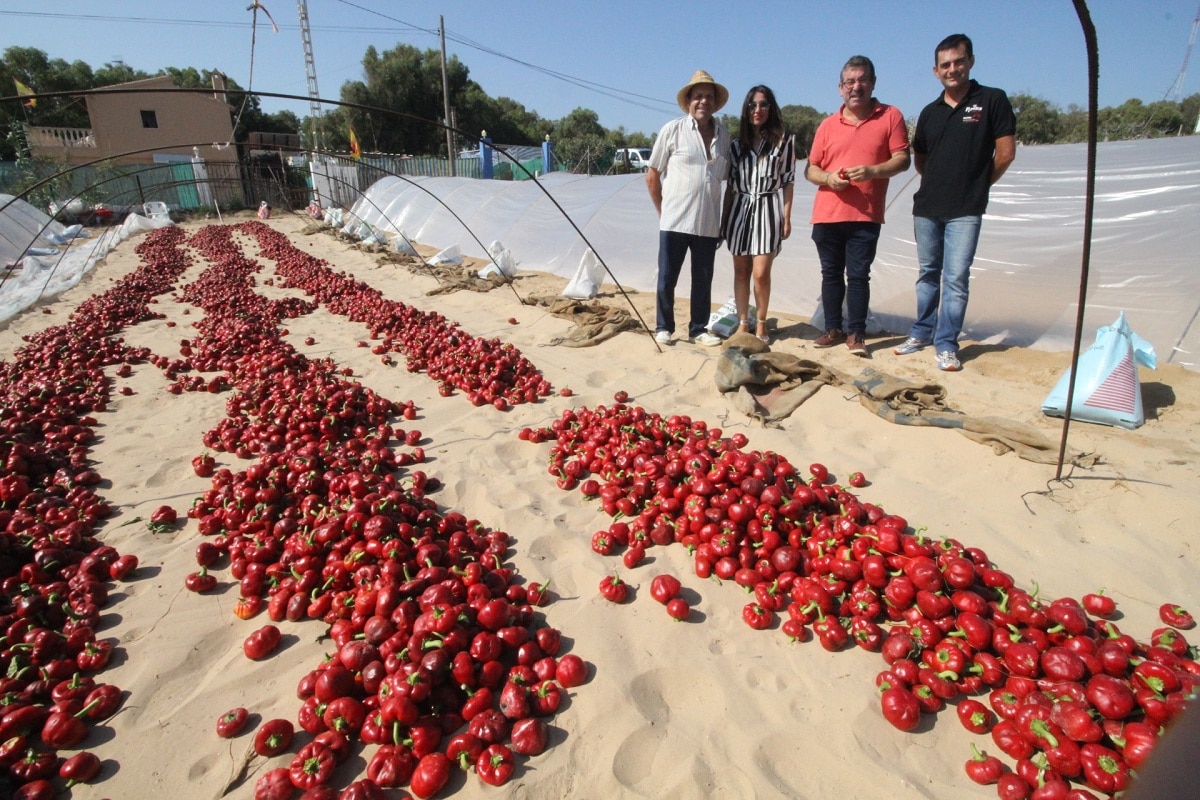
Today we are going to talk about a technically Murcian product that is directly immersed in culinary tradition. It's about the lady. The Señora is nothing more than a ball pepper that is already ripe because it has been dried in the sun. It is red in color and is ready to be used in different gastronomic dishes unique to Murcia. Its cultivation has been done since the SVII century and has become quite important given the flavor it gives to the different dishes where it is used.
In this article we are going to tell you all the characteristics, properties and cultivation of the Señora.
Key features

It is a Murcian product that is composed of a ball pepper with a red color when ripe and dried in the sun. At first glance it looks like a kind of raisin but when you taste it you know it is pepper. From this fruit the paprika is extracted. Grinding its dry shell it became an essential element in the kitchen and the preparation of numerous sausages. Keep in mind that this flavor is used for many things since we all like something spicy.
For many years in the history of paprika it made a great contribution to the food industry of Murcia and was able to prosper in large part thanks to it. Another of the regions that maintain large productions and own denominations of origin of paprika is Extremadura. The name of Ñora arose as a result of the great production of ball peppers in the cultivated areas of the town of Ñora. This town is located very close to Murcia. It was introduced by the Hieronymite friars during the XNUMXth century.
Despite the fact that the Señora has helped Murcia a lot to prosper gastronomically, it is nothing more than a certain type of sun-dried red ball pepper that usually has a bright red and fatty L-size. In a domestic way, ñoras could be made by sewing through the peduncle with great care not to puncture the meat as it could spoil. With this, numerous strings were made that were used to dry in the sun and then they were ready for consumption. These strings are made up of portions of large, red ball peppers.
Origin of the Señora

The scientific name of the Señora is Capsicum annuum. The origin of this type of pepper is in South America. It was surely introduced to Europe in the XNUMXth century after the discovery of America. Once it began to export to Europe, it was seen as one of the important elements for agricultural production. It would already be in Spain where the ideal weather conditions were given for its production. And it is that this type of pepper needs a climate like the one in Spain, more focused on the regions of Murcia to be able to thrive in good conditions.
Within the Capsicum annuum there is a great variety of sizes and shapes and some do not have a culinary value, but merely ornamental. Namely, There are some types of Señora that are only used for decoration and not to be consumed.
It was the Hieronymite monks who arrived in Murcia around the XNUMXth century and introduced the cultivation of this variety of pepper. These monks concentrated all the productions in the vicinity of Murcia located in the orchards of the current districts of Guadalupe and La Ñora. It is in this last town where one of the first Ñora shell grinding mills was established for the production of paprika. This mill is known as the Casianos mill.
Its use in the kitchen could date more or less from this century and it was a highly demanded product for the manufacture of paprika. Too became an essential element for the preparation of sausages due to its nature as a preservative and curative product. And it is that it became the main cause of the expansion that the cultivation of ball peppers would have in Murcia. The moment in which Murcia's large Ñora shell milling factories expanded in the middle of the XNUMXth century is when it was fully expanded.
Cultivation of the Señora
We are going to see now what are the characteristics and requirements that the Señora needs in its cultivation. Harvests can be annual, biannual, or even last several years. These peppers are capable of producing different crops. The size of the plant is about 50 cm wide. In the case of the plants that grow in Murcia, they have to be careful since frosts are frequent in winter. For this reason, during this time there is usually a stop in production and fresh ball peppers are more frequent from spring and summer.
Its cultivation requires an area with an arid and dry climate. This means that much precipitation or humidity is not required. Other types of peppers need more humidity and precipitation, but in this case drying in the sun is better. Its plantation in orchard lands is ideal and this explains the great expansion that this type of Murcia pepper had.
Despite the fact that there are some frequent frosts in winter, the ñoras manage to stay all year round. In Murcia there are large amounts of hectares dedicated to the cultivation of ball peppers known as Señora. Between the fields of Totana, Lorca and Alhama we find about 300 hectares solely dedicated to it.
Gastronomic dishes
We know that this type of pepper is used in many dishes of Murcian gastronomy. It is a type of dry pepper that can be used throughout the year in times when large brown, green or red peppers were only available in the spring and summer season.
Some of the dishes that carry the Ñora are migas and porridge, tortilla porridge, garlic flour, rice dishes, fried squash, stew, endless recipes in which the lady takes on a fundamental role, not counting those that may have been lost in memory.
I hope that with this information you can learn more about the Señora and its characteristics.
